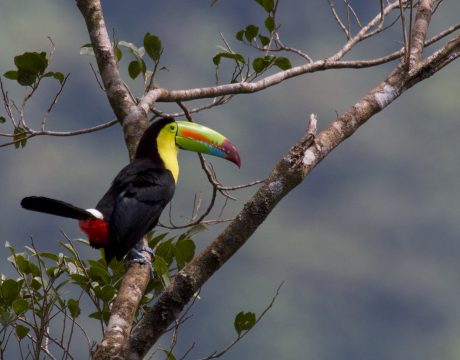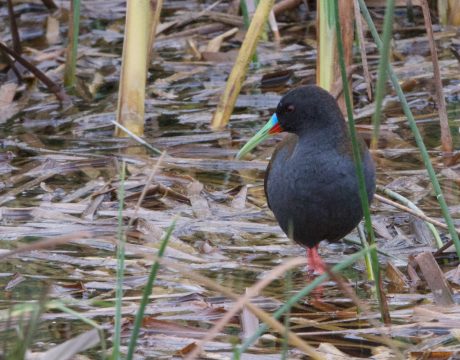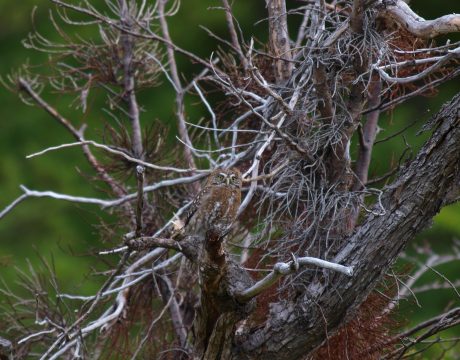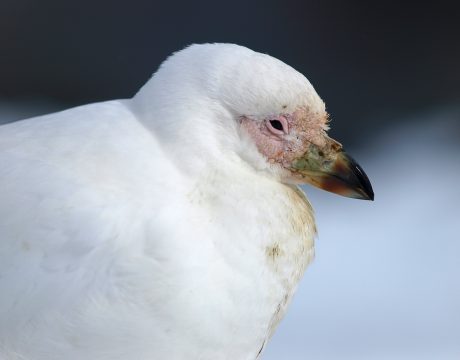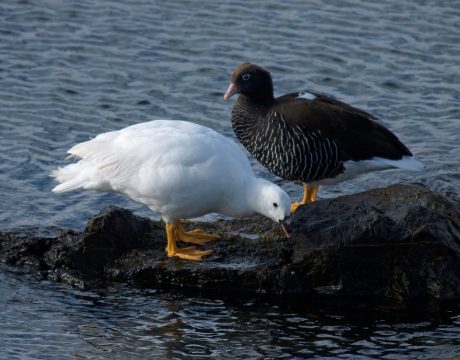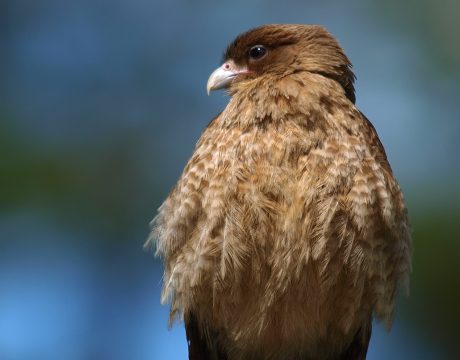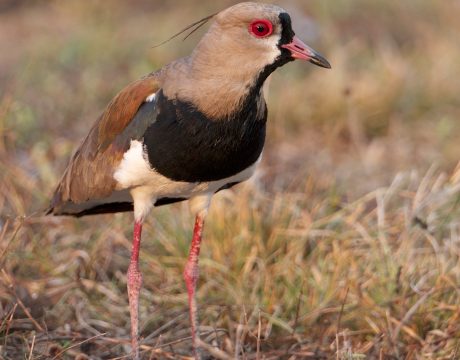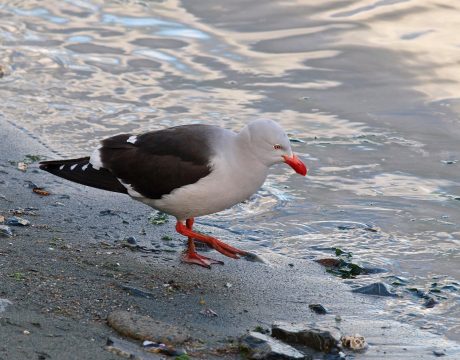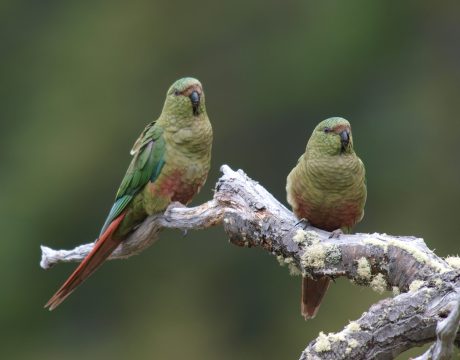The Simple Truth Behind Ballot Initiative No. 1
There is a lot of money being spent to get Alaskans to “Vote No” on Ballot Measure No. 1, with those opponents painting pictures of certain doom for Alaska’s economy. But what those opponents don’t say speaks volumes as to their motivations. Unfortunately, the messaging about what Ballot Measure No. 1 truly does is rather scattered, so let’s bring it all together. First, let’s start with a little history. One of the principal reasons for becoming a state, which was discussed over and over again at the Alaska Constitutional Convention in Fairbanks in November 1955, was the mismanagement of our…
Return of Bird of the Week: Keel-billed Toucan
Toucans are a signature bird species of the Neotropics. Their large size, spectacular bill, flamboyant tails and noisy calls make them immediately identifiable and immense fun to see. There are about 31(!) species of Toucan. The Keel-billed Toucan ranges from southern Mexico to northern Columbia, but they are most common in Costa Rica and Panama. The specialized bill is both lighter and more powerful than it looks; it’s adapted to crack open fruits and nuts. The colors are a sexual characteristic. In addition to fruits and nuts, Keel-billeds feed on small vertebrates, including snakes and lizards, and larger insects. They…
Return of Bird of the Week: Plumbeous Rail
“Plumbeous” means “lead-like,” and while the Plumbeous Rail’s body is dark grey, the bill and legs more than make up for the drab body. It’s not the best quality photo, but it’s a high-quality bird. It’s a widely distributed Rail, ranging from southern Ecuador to Tierra del Fuego. It’s also one of the easier rails to see; most are skulky and a few, like North America’s Black Rail, are near-impossible. WC saw them at sea level and in marshes at 10,000 feet. A pretty amazing distribution. For more bird photos please visit Frozen Feather Images.
Return of Bird of the Week: Austral Pygmy-Owl
WC found it completely by accident. Birding with Marcelo de Cruz in Tierra del Fuego National Park, Marcelo was imitating a pygmy-owl call, a birding technique to make songbirds move where they can be seen. To our surprise, he got an answer. After considerable searching in the soggy thickets of Tierra del Fuego, we found it. You’ll have to look closely. The bird is pretty cryptic, which is important to a daytime ambush hunter. The species is tiny, a male like this is just a bit over six inches long and weighs about two ounces. This is the southern limit of…
Return of Bird of the Week: Snowy Sheathbill
There are no vultures in the Antarctic. But there is carrion. The ecological niche of carrion eaters is occupied instead by the Sheathbills. Sheathbills are odd in a number of ways. Two species of Sheathbill, the Snowy and the Black-faced, make up the entre family of Chionidae. They are also the only land bird in Antarctica, meaning they have talons and not webbed feet. They are the only sub-Antarctic species with bare skin on their face, and the only species with those odd, horny plates on their will. It’s those plates that give the bird its common name. Like a…
Return of Bird of the Week: Kelp Goose
This is a strange goose, endemic to Patagonia and the Falkland Islands. It’s sexually dimorphic: the male is bright white with very large yellow legs; the female is dark brown with a heavily barred neck and chest, and a white eye ring. Kelp Geese are found exclusively on coasts and islets, generally on rocky or pebbly shores. It feeds only on the algae and seaweed growing on the rocks. This is probably the Hybridia subspecies. The species is poorly known to ornithologists. Even the population is a guess: 15,000. The species is not believed to be endangered. For more bird images, please…
Return of Bird of the Week: Chimango Caracara
There don’t seem to be any corvids – the family of birds that includes crows and ravens – in far southern South America. Their ecological niche in North America is filled by falcons, and especially by the Chimango Caracara. An adult bird is about 18 inches long. It’s behavior, at least for the birds WC saw, was strikingly like a Common Raven: bold, habituated to people and opportunistic. For example, it hangs around campgrounds and has been known to steal unattended food. Despite being one of the most common diurnal raptors in southern South America, there hasn’t been a lot…
Return of Bird of the Week: Southern Lapwing
Lapwings are a species of Plover. They are widespread across South and Central America, and there is considerable variation among the four subspecies. This is a bird that has succeeded and prospered in the face of human alteration of their ranges. This is a grassland bird, and man’s creation of pastures and fields has simply given the species more range. It’s not a bird you could easily confuse with any other. The face, very odd head shape and bright red eye and extensive black on the face, neck and belly are unique. The species has a crest in both sexes,…
Return of Bird of the Week: Dolphin Gull
(This week’s Bird of the Week is late; WC was off the internet for a while.) Another species from southern Argentina, Chile and the Falkland Islands, the Dolphin Gull is a smaller member of the Larids, the gull family. With its bright orange-red bill and legs, and yellow eye, it is possibly the easiest gull there is to identify in the field. It’s a scavenger and opportunistic predator. This bird is cruising a mixed colony of Rockhopper Penguins, Black-browed Albatross and King Shags, looking for an unguarded egg of chick. But its smaller size make it a target for bigger…
Return of Bird of the Week: Austral Parakeet
Another species of Tierra del Fuego, the southernmost large island in South America, is the Austral Parakeet. It’s a cousin the late, lamented Carolina Parakeet, North America’s only native member of the parrot family. The species’ range extends up the coast of Chile. In Tierra del Fuego, it’s a sea level bird, but further north it ranges to 2,000 meters. The Austral Parakeet is suffering population declines as a result of deforestation, competition with non-native species, and human captures for pet trade. But overall, this is a species of least concern. While WC saw only this one pair, the species…






